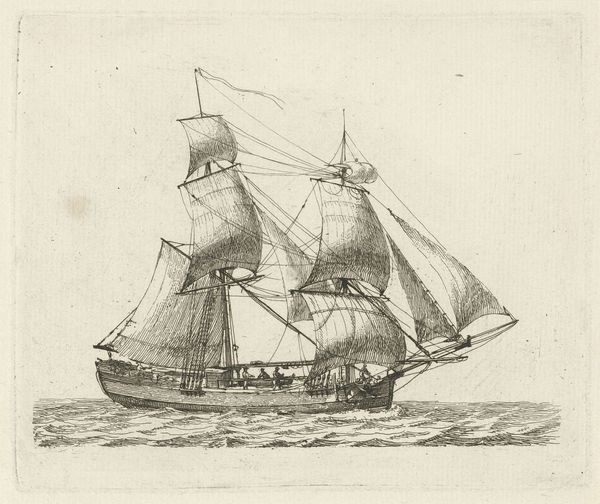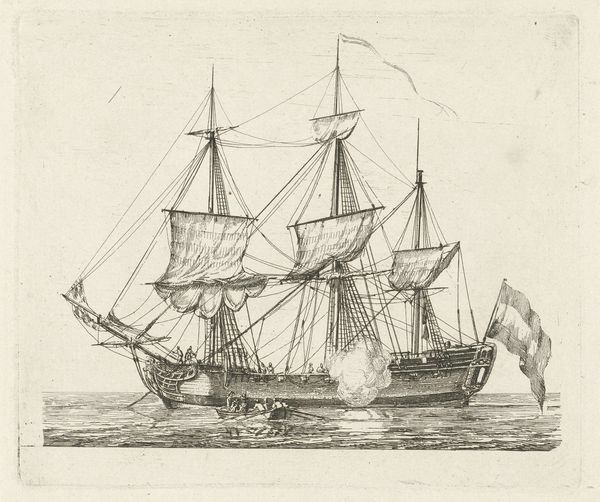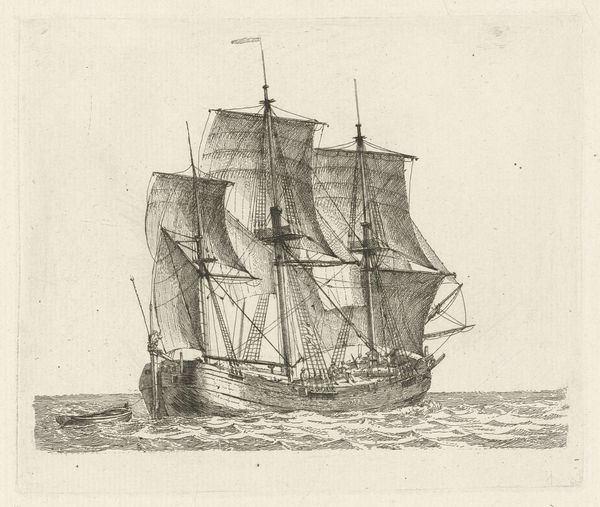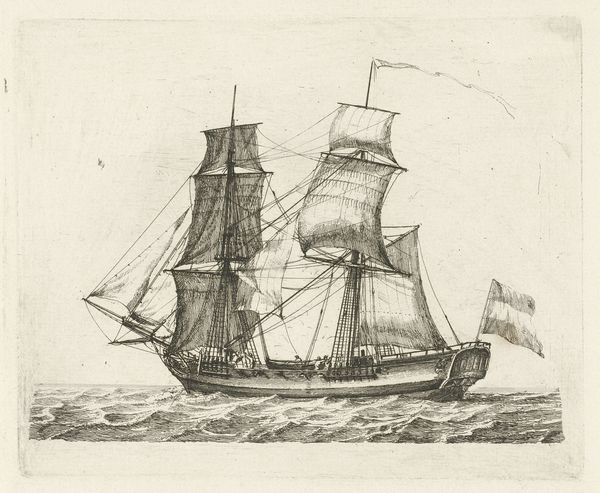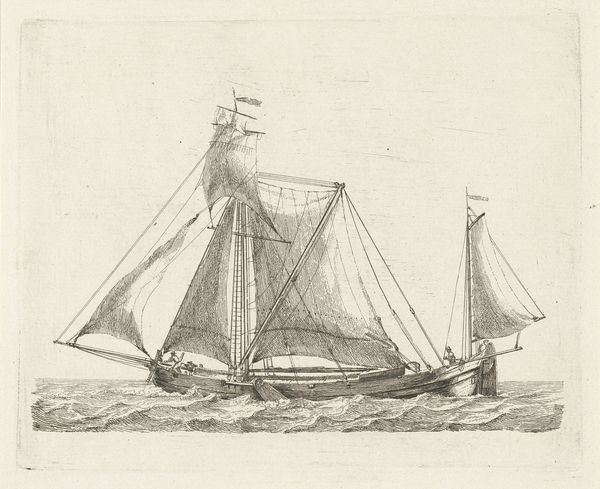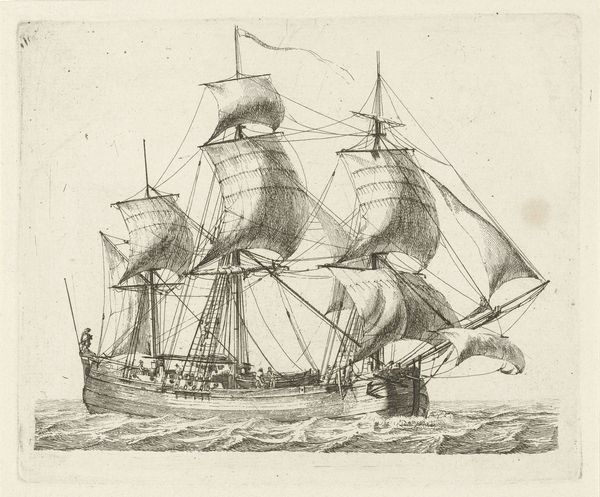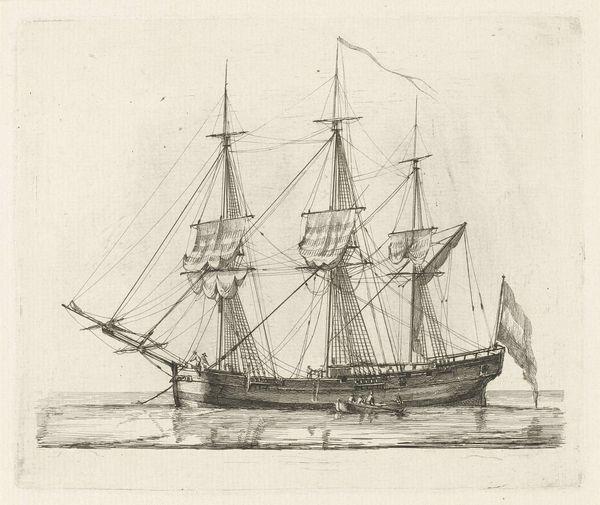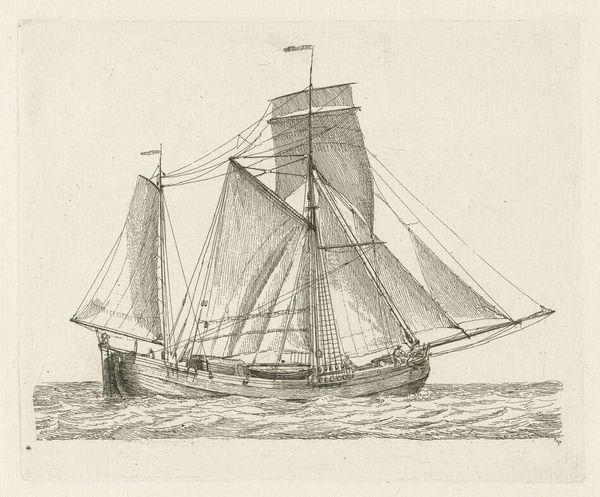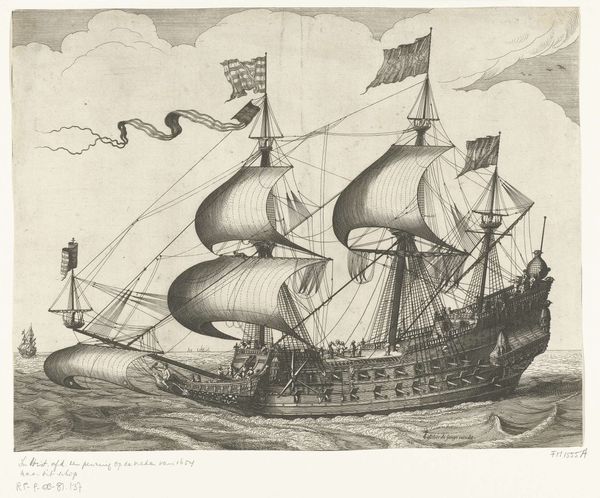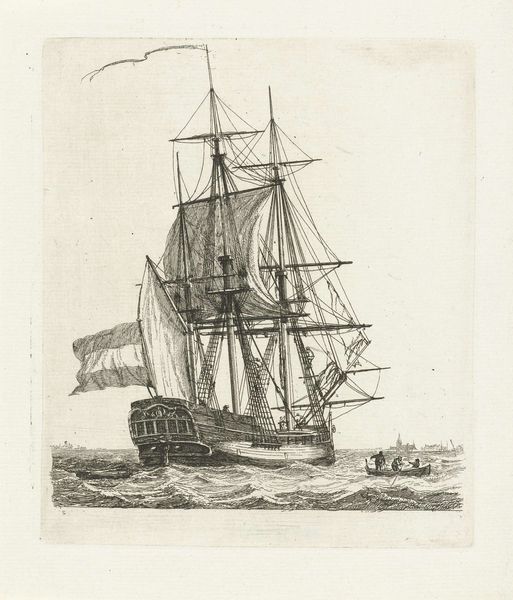
drawing, print, engraving
#
drawing
# print
#
pen sketch
#
landscape
#
orientalism
#
line
#
engraving
Dimensions: height 128 mm, width 154 mm
Copyright: Rijks Museum: Open Domain
Editor: This is "Tweemaster met vlag," a drawing and print by Gerrit Groenewegen from 1789, housed in the Rijksmuseum. The delicate linework captures a sailing ship at sea. It has such a sense of calm and precision, a kind of quiet maritime power. What do you see in this piece? Curator: Well, given its creation in 1789, it’s difficult to separate the image of this ship from the rising tensions preceding the French Revolution and the wider context of Dutch maritime power. These ships weren't just peaceful vessels; they were critical infrastructure for trade and military projection. Editor: So, seeing the ship less as a solitary vessel and more as a symbol of a complex system? Curator: Precisely! Look at the Dutch flag. What does that symbol represent? Groenewegen’s work inadvertently engages in the politics of imagery: it's a portrait of power dynamics and a world on the cusp of radical change, skillfully rendered. Are the lines clean, neat, controlled? That reflects not just style, but how the Dutch wished to portray themselves, ordered, powerful. Editor: That's a perspective I hadn't considered. I was focused on the artistic skill but not on the deeper political messaging that the ship, and even its style, carries. I learned something important. Curator: Indeed. And this forces us to acknowledge how socio-political factors significantly impact artistic expression and, perhaps more crucially, the *perception* of art across generations. A simple image transforms into a loaded statement through time.
Comments
No comments
Be the first to comment and join the conversation on the ultimate creative platform.
